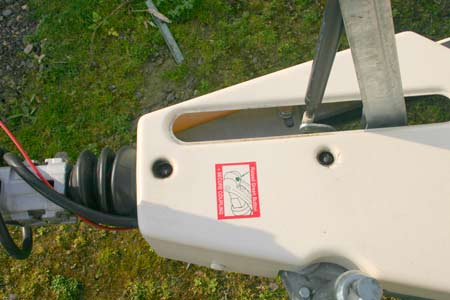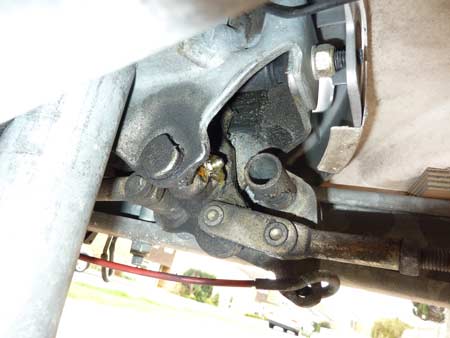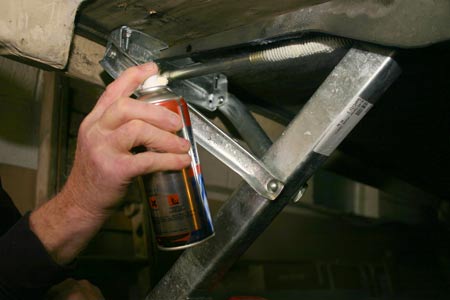Caravan maintenance expert Doug King explains how to keep your caravan’s overrun assembly and corner steadies running smoothly.
The unit bolted to the caravan’s A frame which incorporates the coupling is called the overrun assembly. Because it moves in and out as the caravan articulates behind the towcar during towing, it needs to be kept lubricated with grease. A general type grease available from High Street motorist stores will keep the mechanism working satisfactorily.
Greasing the overrun assembly

On older caravans there are two grease nipples on the top of the overrun assembly, usually visible through holes in the A frame fairing. On the latest caravans they may be replaced by one grease nipple on the underside of the assembly just to the side of the spring. All that is required is to give either the two or the single grease nipple 2-3 pumps from a grease gun at the start of each season, or if the caravan is used extensively during the year, the operation should be repeated at the mid-point of the season.

Importantly, there on both the older and newer type of overrun assembly there is a grease nipple which is often forgotten or ignored. It is on the underside at the rear end of the overrun assembly. To reach it, fully apply the handbrake and chock the wheels for additional safety, and raise the rear steadies. Then wind the jockey wheel down to raise the front of the caravan so that you can reach the grease nipple with the grease gun and give it 2-3 pumps of grease.
Greasing the steadies
Many caravanners – and even some service centres – use conventional grease on the steady screws. This is extremely bad practice as the grease quickly picks up road grime and other impurities which can cause the threads on the steady screws and nuts to become worn and difficult to operate.

So the first operation is to thoroughly clean the screw and remove any old grease. Having removed as much of the grease as possible with rags/wipes, wipe the screws and the contact surfaces between the nut and the underside of the caravan with a degreasing solution. Then spray the screw and the contact surfaces with a lithium based grease. This will adhere to the threads and surfaces. Importantly, lithium grease has excellent resistance to road grime and won’t wash off. Both it and degreasing products are available from High Street motorist stores. Finally, wind the steadies up and down a few times to ensure that they move freely. Again, like the overrun assembly, it should only be necessary to grease the steadies once or twice a year.


Can you tell me what gress to use on wheel bearings touring caravan
We’d suggest speaking to your local dealer/service centre John
Terrible sqeeking noise from my caravan when towing other than on motorway. Can you help and advise
Regards Phil
Have you checked it’s not the hitch and tow ball?
great advice cheers
Many thanks Found this most useful.
Very useful. I am new to caravanning and this is just the kind of info I need. Especially naming the grease that is needed for each job.
Hi reading your item on caravan tyres. Both myself and my friend have had problems with the maxmiler tyres fitted to our coachman caravans, I have a pastiche 460/2 2009, and my friend has a v.i.p 460/2 2009, we have the same size tyres fitted by coachman. Both sets of tyres developed cracks in the sidewalls of the tyres after 3 years use. Evidently this is common in tyres that have high pressures. So I ask the question, why fit this type of tyre to caravans, if not suitable.
Hi David,
glad you found the article useful, and you’re absolutely right about maintenance of this type being as much a matter of safety as presevation.
We think most caravanners are pretty “hands on” so it’s good to know how to do little jobs like this yourself to keep the ‘van in great condition, and working safely.
Neil
Caravan Guard
I find this very useful. Thank you. You are not told about these things on purchase, and these little things are probably better done yourself so you know they have been done. Plus it’s a safety thing, like checking tyres etc.